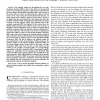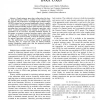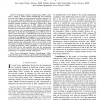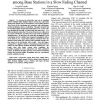12 search results - page 2 / 3 » Capacity of Sparse Wideband Channels with Partial Channel Fe... |
CORR
2006
Springer
13 years 5 months ago
2006
Springer
The capacity regions are investigated for two relay broadcast channels (RBCs), where relay links are incorporated into two-user broadcast channels to support user cooperation. In t...
TWC
2010
13 years 9 days ago
2010
We develop a realistic model for multiple-input multiple-output (MIMO) broadcast channels, where each randomly located user's average SNR depends on its distance from the tran...
ICC
2007
IEEE
13 years 12 months ago
2007
IEEE
Abstract— Despite primary space-time coding where the channel state information (CSI) is available at the receiver only, the capacity and performance of multiple-input multiple-o...
TWC
2008
13 years 5 months ago
2008
Abstract--Orthogonal random beamforming (ORB) constitutes a mean to exploit spatial multiplexing and multi-user diversity (MUD) gains in multi-antenna broadcast channels. To do so,...
ICC
2007
IEEE
13 years 9 months ago
2007
IEEE
To increase the achievable sum rate of downlink MIMO (Multiple Input Multiple Output) systems, the cooperation among Base Stations (BS) is investigated in a slow fading channel. Th...




